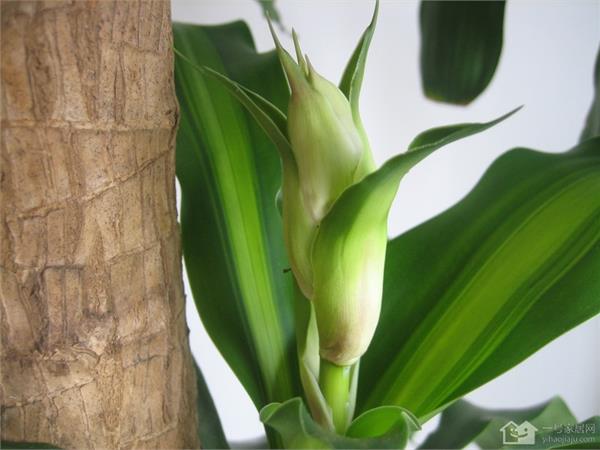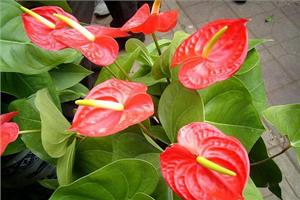How to raise Dendrobium and teach you 6 tips for raising Dendrobium.
Brazilian wood, an evergreen tree of the lily family, curved and arched, bright green and glossy. The flowers are small and fragrant, and they are indoor foliage plants. Now they have become the new darling of the household soft decoration industry. What about the yellowing of Brazilian wood leaves? I'll teach you how to deal with the yellowing of Brazilian wood leaves.

The flowers of Brazilian wood are not poisonous, but they taste so strong that it is best to move outdoors or to a place with more space when blooming. The leaf base, stem and branch of Brazil wood can extract traditional Chinese medicine, which has the effect of stopping bleeding. The traditional Chinese medicine is called Draconis Draconis, so it is non-toxic.
Brazilian wood is a kind of valuable wood. In Africa, it symbolizes the blessing of beauty. The aroma of Brazilian wood comes from the oil cells in the flowers, which can secrete fragrant aromatic oils. When these aromatic oils spread in the air, with the help of the sense of smell, we will feel the comfortable strands of fragrance. In addition, it contains a substance called "glycoside", which can also emit the faint fragrance that people like in the process of decomposition. However, there is no data to show that the aroma of Brazilian wood is toxic. Only some people who are physically weak, or those who are allergic to the smell of pollen flowers should pay attention to the fact that it is best to move the flowers out of the living room.
What if the leaves of Brazilian wood turn yellow?
The main results are as follows: 1. too much watering, the basin soil is too wet for a long time, resulting in lack of oxygen in the soil, causing some fibrous roots to rot, hindering normal respiration and absorption of water and nutrients, causing leaves to turn yellow and fall off. After the injury, the young leaves turn pale yellow, and then the old leaves gradually turn yellow. watering should be controlled immediately, fertilization should be suspended, and the soil should be often loosened to make the soil well ventilated.
2. Drought and dehydration. Flower cultivation leakage watering or long-term watering half waist water (that is, upper wet and lower dry) will affect nutrient absorption, and it is also easy to cause dull and dull leaves and drooping leaves. First, the lower old leaves aged, and gradually withered and yellowed off from the bottom up. At this time, a small amount of water is needed and sprayed, so that it can be gradually recovered and then transferred to normal watering.
3. Lose weight for a long time. There is no application of ammonia fertilizer or no change of soil for a long time, and there is a lack of nitrogen and other nutrients in the soil, resulting in thin branches and leaves and thin and yellow leaves. It is necessary to pour the basin in time and gradually apply rarefied mature liquid fertilizer or compound flower fertilizer into new loose and fertile culture soil.
4. Excessive fertilization. If you fertilize too much, the new leaves will be thick and uneven, and the dry tips of the old leaves will fall off. You should immediately stop fertilization and increase the amount of water to make the fertilizer flow out from the drainage hole at the bottom of the basin, or immediately pour the pot, rinse the soil block with water and then plant it again into the basin.
5. Hot and high temperature. In summer, if you put cool flowers (such as cyclamen, Golden Bell upside down, four Seasons Begonia) in a high temperature place to let the strong light shine directly, it is very easy to cause the young leaf tip and leaf edge to scorch, or the leaf yellow to fall off. Move to a well-ventilated shady place in time.
6. Excessive shade. If the sun-loving flowers are placed in shady places or places with insufficient light for a long time, it will cause the branches and leaves to turn yellow.
7. The soil and water is partial. There are more saline and alkali in soil and water in most areas of northern China, and flowers with acid-like soil are planted, such as rhododendron, camellia, Michelia, gardenia, orchid, magnolia, sweet-scented osmanthus and so on. Due to the lack of soluble iron and other elements that can be absorbed by the soil, the leaves will gradually turn yellow. Acid soil should be selected when planting, and alum fertilizer and water should be often watered during the growth period.
8. Whether it is airtight or not. If too much nitrogen fertilizer is applied, the branches and leaves will grow luxuriantly, coupled with the long-term unpruned, resulting in insufficient light in the inner chamber branches and leaves, which is easy to cause the leaves to yellowing and falling off. Reasonable fertilization should be applied and pruning should be strengthened to make it ventilated and transparent.
9. The air is dry. When the indoor air is too dry, some flowers that like the humid environment, such as hanging orchids and orchids, often appear leaf tip dryness or leaf edge scorching and so on. Attention should be paid to water spraying, plastic film cover and other methods to increase air humidity.
10. Improper temperature. If the room temperature is too low in winter, the flowers are often vulnerable to cold damage, which leads to the yellowing of the leaves and death in severe cases. If the room temperature is too high, the transpiration of the plant is too high, and the root water and nutrients are in short supply, the leaves will turn yellow. Please pay attention to adjust the room temperature in time.
11. The soil is sour. It is easy to lose acid and magnesium in southern red loam. planting flowers and trees with alkali-tolerant or mute soil, such as oleander, yellow poplar, Yingchun, etc., are often prone to green and yellowing between the veins of old leaves. Can apply calcium magnesium phosphate fertilizer or spray magnesium sulfate solution.
12. Diseases and insect pests. Leaf spot disease caused by fungi and other bacteria is easy to cause local necrosis of the leaves, yellow spots or patches appear, the whole leaves wither and fall off seriously, yellow and green mottle appears on the leaves after being infected by mosaic virus, and damaged by shell insects, red spiders and so on, the leaves will also become local yellow, or even the whole leaves will wither and fall off. All should be sprayed in time.
13. Strong sexual stimulation. The use of excessive concentration of pesticides in the prevention and control of diseases and insect pests, or being polluted by toxic gases in the atmosphere, or suddenly watering cold water when the temperature is high, are easy to cause local yellowing and scorching of the leaf tip or leaf surface, or even the whole plant to die. Therefore, we should pay attention to the rational use of pesticides and try to eliminate air pollution sources. Avoid watering flowers with cold water around noon in midsummer. Finally, it should be mentioned that the yellow leaves of potted flowers are sometimes caused by one reason, but they are often caused by a variety of factors, so a correct diagnosis should be made to prescribe the right medicine to the case.
What if the leaves of Brazilian wood turn yellow? I believe that after reading this article, you have a basic understanding of whether Brazilian wood blossoms are poisonous. If you want to know more about decoration, please click to enter the decoration knowledge channel.
If you want to know more about it, you can continue to follow the No.1 Home Network.
- Prev

How long does epiphyllum blossom? the effect of epiphyllum on household environment
How long does epiphyllum blossom? the effect of epiphyllum on household environment
- Next

Can I raise flamingos in the bedroom? how to raise flamingos?
Can I raise flamingos in the bedroom? how to raise flamingos?
Related
- Wuhan Hospital Iron Tree Blooming Result Was Instantly Frightened by the Gardener Master
- Which variety of camellia is the most fragrant and best? Which one do you like best?
- What is the small blue coat, the breeding methods and matters needing attention of the succulent plant
- Dormancy time and maintenance management of succulent plants during dormancy
- Minas succulent how to raise, Minas succulent plant pictures
- What are the varieties of winter succulent plants
- How to raise succulent plants in twelve rolls? let's take a look at some experience of breeding twelve rolls.
- Attention should be paid to water control for succulent plants during dormant period (winter and summer)
- Watering experience of twelve rolls of succulent plants
- Techniques for fertilizing succulent plants. An article will let you know how to fertilize succulent plants.

